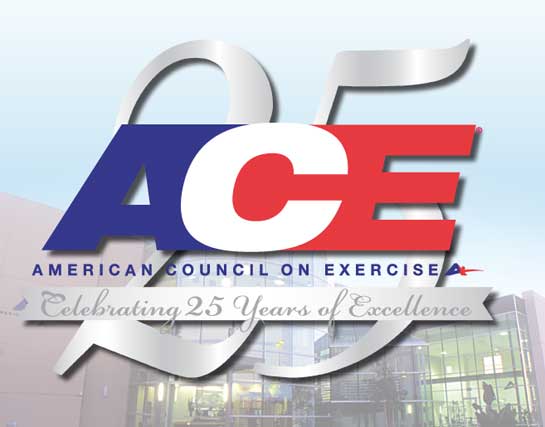
BY CARRIE MYERS
This year marks the 25th anniversary of the founding of the American Council on Exercise. To celebrate this milestone, we’re taking a look back at our history, recognizing some of the incredible people who have been responsible for our development and growth, and looking forward to the next 25 years.
In the Beginning
The American Council on Exercise made its official debut in 1985 under the name “IDEA Foundation.” Its focus was on certification, research and consumer education. There were other organizations educating fitness professionals, explains Peter Davis, president and CEO of IDEA Health & Fitness Association, but none of them carried national credibility at the time. They were recognized in their respective states, but not necessarily outside their borders. And many of those were educating, but not certifying, professionals.
Peter and his wife, Kathie, who now serves as IDEA’s executive director, were already immersed in the fitness industry as the founders of IDEA—International Dance-Exercise Association—a membership organization for fitness professionals founded in 1982. This was a time when aerobics were in full swing and it was becoming obvious that group fitness was here to stay. As the media was latching onto negative information regarding dance-exercise injuries, Peter and Kathie were realizing the need for some standardization in the industry. They founded IDEA’s sister organization, the IDEA Foundation, in 1985, brought Sheryl Marks Brown on as executive director—Peter and Kathie acted as president and vice president, respectively—and began gathering an industry think-tank to generate ideas to standardize guidelines for aerobics instructors. It was no easy task.
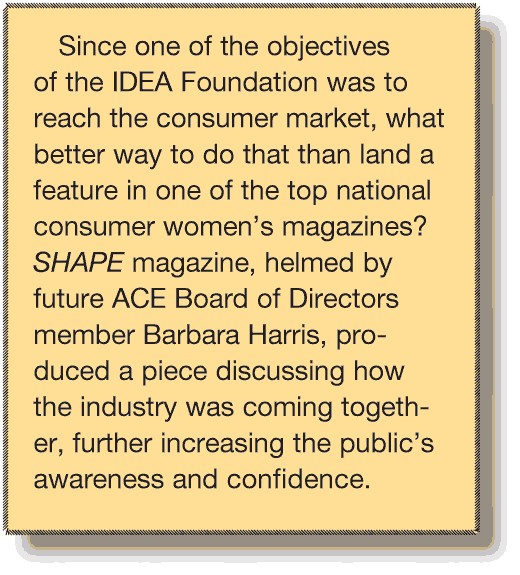
“You have to realize that we were bringing together 50 different organizations, each with their own ideas of what should be included and what was important,” notes Peter. “It was quite a feat to come up with that first exam.”
Among this group were nationally renowned experts in the field, including Dr. Kenneth Cooper (Cooper Institute), Jackie Sorenson (aerobic-dancing pioneer) and Judi Sheppard Missett (Jazzercise). Because it was crucial for the exam to be as credible as possible, the group worked with ETS—Educational Testing Services—the same company that devises the SATs.
It was important, explains Peter, that those within the industry, as well as the general public, realize we were taking this effort seriously, as this was a pioneering endeavor to begin overhauling an industry that was taking off in the consumer market, but had no real foundation within itself.
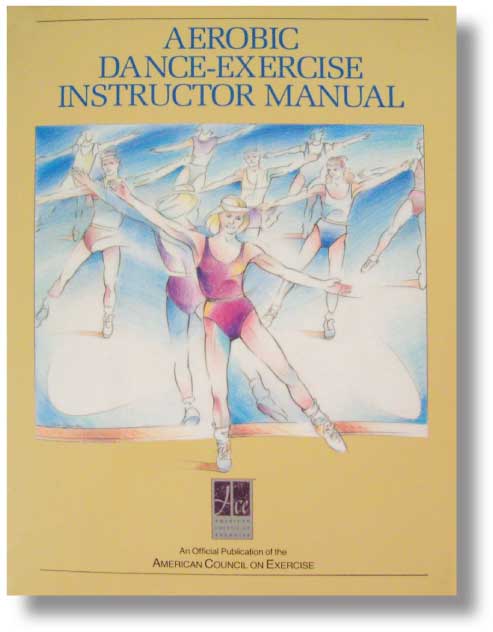
Within one year, 3,000 people had taken the dance-exercise instructor exam, with 66 percent passing on the first try. Where previously there had been no national standards or exam, there were now about 2,000 qualified fitness professionals, giving consumers more confidence that classes were both safe and effective. Those passing this initial exam carried the honor of being “Gold certified,” as they had only a rough draft of the aerobics instructor manual from which to study. Officially published in 1987, the Aerobic Dance-Exercise Instructor Manual soon became the “bible of fitness” for instructors. To ensure professionals were staying up-to-date on the latest information, a continuing-education program was instituted, requiring certified instructors to complete a minimum number of continuing education credits every two years to renew their certification.

The Next Phase
In keeping with the stated objectives of promoting research initiatives and consumer education, the IDEA Foundation awarded its first research grant of $5,000 to the San Diego Center for Children in 1988 to study the effects of aerobics/dance exercise on children with behavioral and emotional issues. And later that year they teamed up with USA Today to sponsor the first “Summer Meltdown Fitness Hotline.” The hotline, manned by ACE-certified Fitness Professionals, received more than 3,000 calls in just 15 hours. People were hungry for accurate health and fitness information. The race was on!
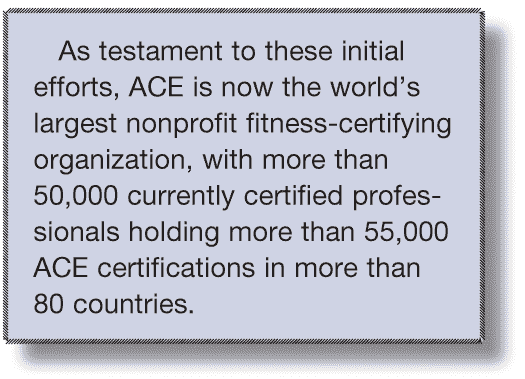
The ’90s were setting up to be a huge decade for the organization, starting with its name-change. There was often confusion amongst both consumers and professionals regarding IDEA and IDEA Foundation, unsure of the purpose of either or whether they were even separate organizations. So the board made the decision to institute a name-change. This gave birth to the American Council on Exercise or ACE. To further reduce the confusion, Peter and Kathie stepped down from the board to focus all their energies on IDEA.
Following ACE’s success in creating standards for group exercise—by 1990 more than 30,000 professionals had taken the ACE Aerobic Instructor Exam—it was now time to turn the focus to one-on-one training. Of the more than 600 candidates who sat for that first ACE Personal Trainer Exam, 72 percent passed to become the first ACE-certified Personal Trainers.
The era of personal training had begun! With this came more specialized training focusing on specific groups. Here are a few highlights from what became a decade of substantial growth for the American Council on Exercise:
1991: The ACE Personal Trainer Manual was published with Reebok funding publishing costs. ACE also began publishing the ACE Insider, a newsletter that was distributed to 28,000 certified instructors and industry leaders.
1992: A specialty-recognition program was established to acknowledge instructors who had earned continuing education credits in specific fitness categories, such as senior exercise or prenatal fitness.
1993: ACE reached out to America’s youth with Energy2Burn. This initial pilot program was conducted in schools throughout Southern California. ACE-certified instructors volunteered to go into fourth-grade classrooms once a week for five weeks. The purpose: To teach kids fitness basics and demonstrate a simple 15-minute exercise routine.
1994: A toll-free hotline, service announcements, a nationally syndicated column and free Fit Facts sheets were used to further promote physical activity to the general public. The specific message: Any and all kinds of physical activity counts. This push in the public sector continued to elevate personal training, and the number of personal training candidates exceeded those of group fitness instructors for the first time. ACE certified its 10,000th personal trainer during this year, and Executive Director Sheryl Marks Brown was named one of the nation’s top 10 healthy American fitness leaders by the U.S. Junior Chamber of Commerce.
1995: ACE was the leader in providing the industry’s first certification for Lifestyle & Weight Management Consultants. Two new publications were launched: ACE Certified News, an exclusive benefit for ACE-certified Professionals, and ACE FitnessMatters, which covered the latest in research, equipment reviews and trends, and was published for both consumer and professional readers.
1996: The ACE Lifestyle & Weight Management Consultant Manual was released, blending the sciences of nutrition, exercise and psychology. ACE began studying the safety and effectiveness of fitness products and services, and created a national public relations platform campaign to communicate the results of the studies to the public.
1997: Recognizing the need to help fitness professionals move beyond just being certified and to help them build successful careers and accomplish long-term goals, the ACE Academy was established. As a result of ACE’s commissioned studies, the Wall Street Journal designated ACE as the nation’s “Workout Watchdog” for serving as a key consumer advocate for fitness products and programs. And for the first time in ACE history, more personal trainers than group fitness instructors were currently certified.
1998: ACE FitnessMatters received a new look, transitioning from a newsletter to a new magazine format, but continued to maintain its non-biased status by not accepting outside advertising. ACE also garnered an unprecedented amount of media coverage on a wide range of studies and surveys, including the air glider and the most common exercise mistakes. Having covered children’s fitness, ACE’s attention now turned to the other end of the spectrum—senior fitness. was released to guide fitness professionals on special exercise considerations for a growing older-adult population.
1999: Revisiting America’s youth health crisis, ACE’s then executive director, Ken Germano, introduced Operation FitKids (OFK), a program dedicated to improving the health and fitness of America’s youth through the use of commercial fitness equipment donated by equipment manufacturers and health clubs. Working with local high schools, organizations and youth groups, Operation FitKids created fitness centers, at minimal cost, to provide adolescents and teenagers with greater access to comprehensive physical fitness programs through educational materials, training, mentoring and internships for exemplary participants. To help potential clients find ACE-certified Professionals in their area, ACE introduced its online Professional Registry. And the first ACE Clinical Exercise Specialist Certification Exam was administered, further expanding the knowledge and skills of professionals working with special populations and post-rehab clients.
A New Millennium
Despite unrest during the first few years of the new millennium, including Y2K, 9/11, and the Second Gulf War, ACE continued to plow ahead as a leader in the fitness industry. And the time had come for ACE to establish a more permanent base for its staff and educational activities.
“In February of 2000, the ACE Board of Directors approved a plan submitted by ACE senior staff to begin the search for a new home for the American Council on Exercise,” explains Scott Goudeseune, current ACE president and CEO. “Our lease at the rented facility was coming to an end and it was clear that the organization was at the beginning of a growth period that would require a much larger space.”
With a desire to maintain their employee base and remain in one of America’s most health-conscious cities, ACE representatives scoured San Diego for a new site. “In searching for a facility, our top priority was to find a location that would allow us to create a work environment that promoted employee interaction and wellbeing, so it was important that the facility contained open-air workspace and adequate room for a state-of-the-art fitness facility for employee use and training workshops,” says Goudeseune.
When a suitable location couldn’t be found, explains Goudeseune, “we decided to build from the ground up, and moved into the existing facility in December 2001.”

Besides a new physical structure, ACE was also due for a Web site overhaul (see sidebar, page 6). Where one of the primary purposes of the initial 1996 Web site was to simply create an online presence, the goal of each redesign since then has been to provide more tools and greater interaction for both fitness pros and consumers. Just this decade alone has seen four major rebuilds.
Another goal of ACE was to create collaborations with other organizations that would help them further their mission outside the industry.
“Over the past decade, we’ve formed collaborative relationships with a variety of professional organizations,” explains Cedric X. Bryant, Ph.D., chief science officer for ACE, “all of which share our mission of enriching quality of life through safe and effective activity. Such collaborations have helped expand our reach and our impact, both within and outside the fitness industry, creating many new opportunities for the professional growth and development of ACE-certified Professionals.”
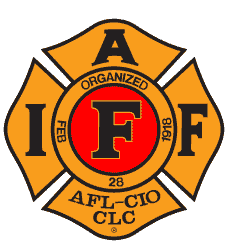
One of the first of these partnerships was with the International Association of Fire Fighters (IAFF). “Our collaborative relationship with the International Association of Fire Fighters began in 2000,” recounts Goudeseune. “The IAFF approached ACE about creating a credential for the fire service that would enable members of the rank and file to work with their fire service peers to develop and maintain the peak conditioning needed to perform the rigorous duties of their job.”
This led to ACE developing a Peer Fitness Trainer Certification (PFT) , which was launched in 2002. Today, more than 4,000 fire service men and women have become ACE Peer Fitness Trainers.
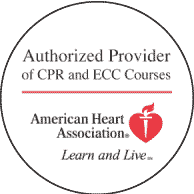
In 2003, ACE began a partnership with the American Heart Association (AHA) that positioned ACE as the then-exclusive provider of Heartsaver First Aid, CPR and Automatic External Defibrillator (AED) training within the fitness industry. Holding a first-aid and CPR credential was—and continues to be—an ACE requirement for becoming a certified professional.
“AED devices were starting to become more widespread in public locations,” says Goudeseune, “but their availability in the health-club environment was scarce, in part due to the cost of delivering consistent training for the safe use of the units. The collaborative effort with the AHA placed ACE in a leadership position in delivering AED training to the industry. Today, all current ACE-certified Professionals in North America are required to be AED certified, helping to make health club facilities safer for American consumers.”

In 2007, the ACE/AARP collaboration was created, enabling ACE professionals to be the trusted “trainer of choice” for the more than 39 million AARP members. “The AARP relationship has been beneficial for both parties in raising awareness with the consumer on the benefits of regular physical activity and has opened the door for extended relationships like that with the International Council on Active Aging (ICAA),” adds Goudeseune. Seeking to further address the needs of specific populations—including older adults—ACE launched the Advanced Health & Fitness Specialist Certification in 2008. The new certification, which replaced the Clinical Exercise Specialist, provides fitness professionals with extensive programming for the diseases and disorders they are most likely to encounter among their clientele. The ACE Advanced Health & Fitness Specialist Manual was also published later that year.
Taking the Lead on Accreditation
Ironically, the start of the new millennium brought with it issues similar to those confronted by Peter and Kathie Davis when they originally began developing the idea of a nonprofit certification organization. As the popularity of health and fitness exploded among consumers, the industry was growing at an equally rapid rate, with the number of certifying agencies increasing exponentially. Today there are more than 70 fitness certification organizations offering an estimated 300 programs. Not surprisingly, this reawakened the issue of standardization within the industry.
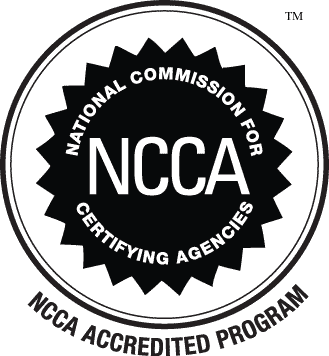
Over the years, there has been a lot of discussion about licensure for fitness professionals—similar to how other professions, including physical therapists and occupational therapists, have to be licensed within their respective states. While this remains a hot topic for debate, it has yet to be resolved. In the meantime, the International Health, Racquet, and Sportsclub Association (IHRSA) and the Medical Fitness Association (MFA) stepped in to provide some guidance, recommending that fitness facility operators only hire personal trainers with certifications from agencies accredited through the National Commission for Certifying Agencies (NCCA) or an equivalent accrediting organization. Of course, being a leader in the industry, ACE was already moving in this direction.
“Our decision to pursue NCCA accreditation is consistent with our commitment to protect the public and offer safe environments for them to take advantage of physical activity,” says Bryant. Bryant goes on to explain that the NCCA evaluates the processes and systems used by an organization to identify the professional role and scope of practice, develop exam content, and provide proper exam administration and scoring to ensure the following:
- That the examination process is fair and unbiased
- That the examination accurately measures the minimal competence of the candidate for the profession
- That the public is protected from unqualified or ineffective practitioners
- That the organization has the means to support its professionals
After a thorough review process, ACE earned NCCA accreditation in 2003. As one of only a limited number of fitness certification organizations that meet NCCA qualifications, receiving NCCA accreditation more tightly secured ACE’s position as the leader in the industry.
Today and Into the Future
Many of us in the industry have grown alongside ACE, from professional infancy to where we are today. We know we wouldn’t be here if it weren’t for the organization breaking ground and planting and nurturing new ideas.
“I love the fact that ACE has moved from an organization that primarily served fitness professionals to one that today has a much more far-reaching impact,” says Douglas Brooks, M.S., co-owner of Moves International Fitness with his wife Candice, and an ACE Gold-certified Professional and CEC provider.
As an ACE-certified Professional since 1989 and current ACE Board of Directors member, Chris Freytag has had a front-row seat from which to view ACE’s 25-year history. And she’s pleased with the changes she’s witnessed. “ACE has become very cohesive—a smoothly run ship—with a solid mission and committed employees,” says Freytag. “ACE exhibits integrity for what they do and is committed to elevating their certified professionals to a high level. [They also provide] a much-needed service for consumers, which helps fitness professionals by creating educated consumers looking for their services.”
Freytag also admires the fact that ACE has become very technically savvy, staying ahead of the curve, which keeps them fresh and innovative. But perhaps what speaks to the highest level of respect, admiration and success of an organization is the bonds they make, both within the walls of the facility, as well as outside them.
“I feel like ACE is a family. The employees really work hard and work together,” says Freytag. “I can tell there is a mutual respect for each other and for the actual company and what it stands for.”
And Freytag, who presents at ACE’s Annual Fitness Symposium, believes that sense of family extends beyond the staff to ACE-certified Professionals as well. “Being a part of the ACE symposium is always so inspirational. ACE goes the extra mile to accommodate, educate and inspire their professionals. I feel proud to be a part of the ACE family at those events.”
Given how far ACE has come and what it’s already accomplished, what type of future endeavors is it headed for? “Over the years, the successes enjoyed by ACE have been a direct result of the hard work of the many fine ACE employees and ACE-certified Professionals,” says Goudeseune. As examples, Goudeseune cites the recent publication of the fourth edition of the ACE Personal Trainer Manual, which includes a comprehensive and individualized approach to training clients called the Integrated Fitness Training Model, the hugely popular ACE Fitness Symposium and expanded consumer outreach.
“The future of the ACE-certified Fitness Professional is extremely bright,” Goudeseune continues. “Movement is an essential component of preventative healthcare, and the American Council on Exercise will diligently press forward as a leading contributor in promoting increased physical activity throughout the world. ACE-certified Professionals are well-equipped to attack the obesity crisis facing our nation and ACE’s overarching goal is to continue the momentum that we’ve experienced over the past 25 years by equipping professionals with the tools they need to help all segments of society to experience the innumerable benefits of leading an active lifestyle.”
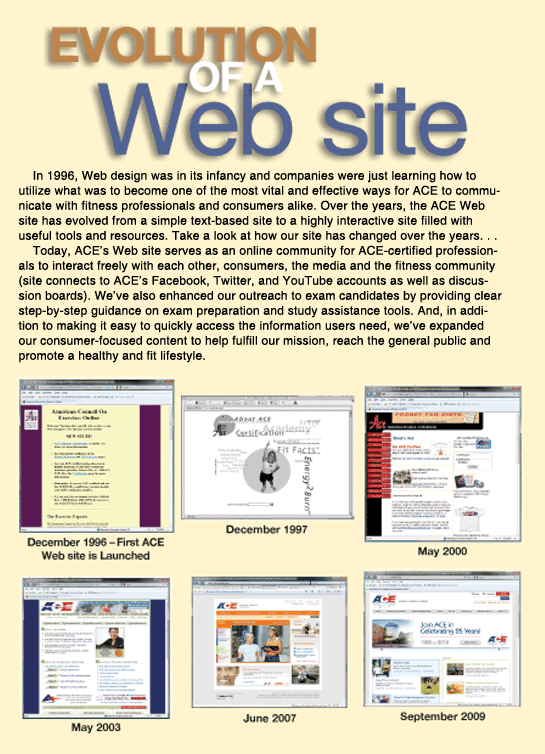
______________________________________________________________________
Carrie Myers has a bachelor’s degree in exercise science and has been a freelance writer for more than 11 years. She is the author of the award-winning book, Squeezing Your Size 14 Self into a Size 6 World: A Real Woman’s Guide to Food, Fitness, and Self-Acceptance, and presents, teaches and trains in N.H. and Vt.